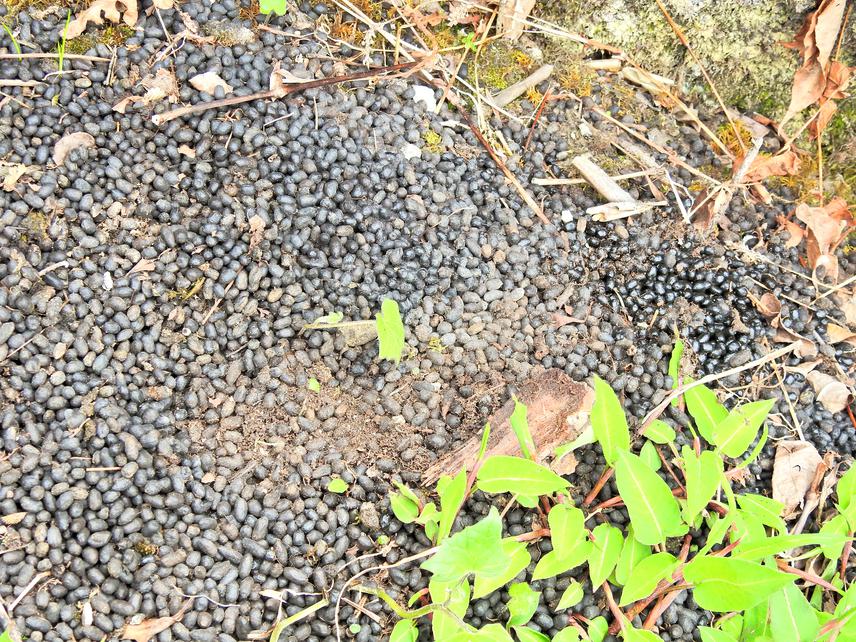Kiran Thapa Magar
Alpine Musk Deer (Moschus chrysogaster) is globally endangered Himalayan mammal. The population of this species is rapidly declining from Nepal and its ranges countries. The reasons behind its declination are poaching and habitat destruction. This species is found across Himalayan ranges in Nepal but its status in the far-western region of Nepal, particularly Api Nampa Conservation Area, is not well documented. Hence, the purpose of this project is to determine the current status of the Alpine Musk Deer from this area, to provide related information to policy makers, and to encourage local support for its sustainable conservation.

Musk Deer Pellet. ©Kiran Thapa Magar.
The Alpine Musk Deer (Moschus chrysogaster) is classified as an endangered species by the IUCN and protected species in Nepal under the National Park and Wildlife Conservation Act 1973. The population of this species is rapidly declining from Nepal and its ranges countries. The reasons behind its declination are poaching and habitat loss. This species is found across Himalayan ranges in Nepal. However, the status of the species from the far-western region of Nepal, particularly in Api Nampa Conservation Area (ANCA), is not well documented yet. So, information related to current status, distribution and conservation issues of the species is very scanty. Additionally, this species is facing severe anthropogenic pressure from activities like poaching, excessive livestock grazing, forest fires, and the collection of non-timber forest products including Yarsagumba (Ophiocordyceps sinensis) from the proposed project sites. Hence, extensive scientific study and necessary conservation actions are urgent for long term survival and conservation of this charismatic Himalayan species.
The overall aim of the project is to assess the status and distribution of the musk deer along with the conservation threats within the project sites. Moreover, the project also targets to involve community towards the conservation initiatives of the musk deer and their habitat. The study is based on both scientific field survey and community level activities. So, to address the objectives, faecal pellets sampling, line transect sampling, questionnaires survey, interviews, focus group discussion and conservation outreach activities will be applied. Inputs of this project will useful for preparing management plans and policies for long-term conservation of musk deer and their habitat to policy makers.